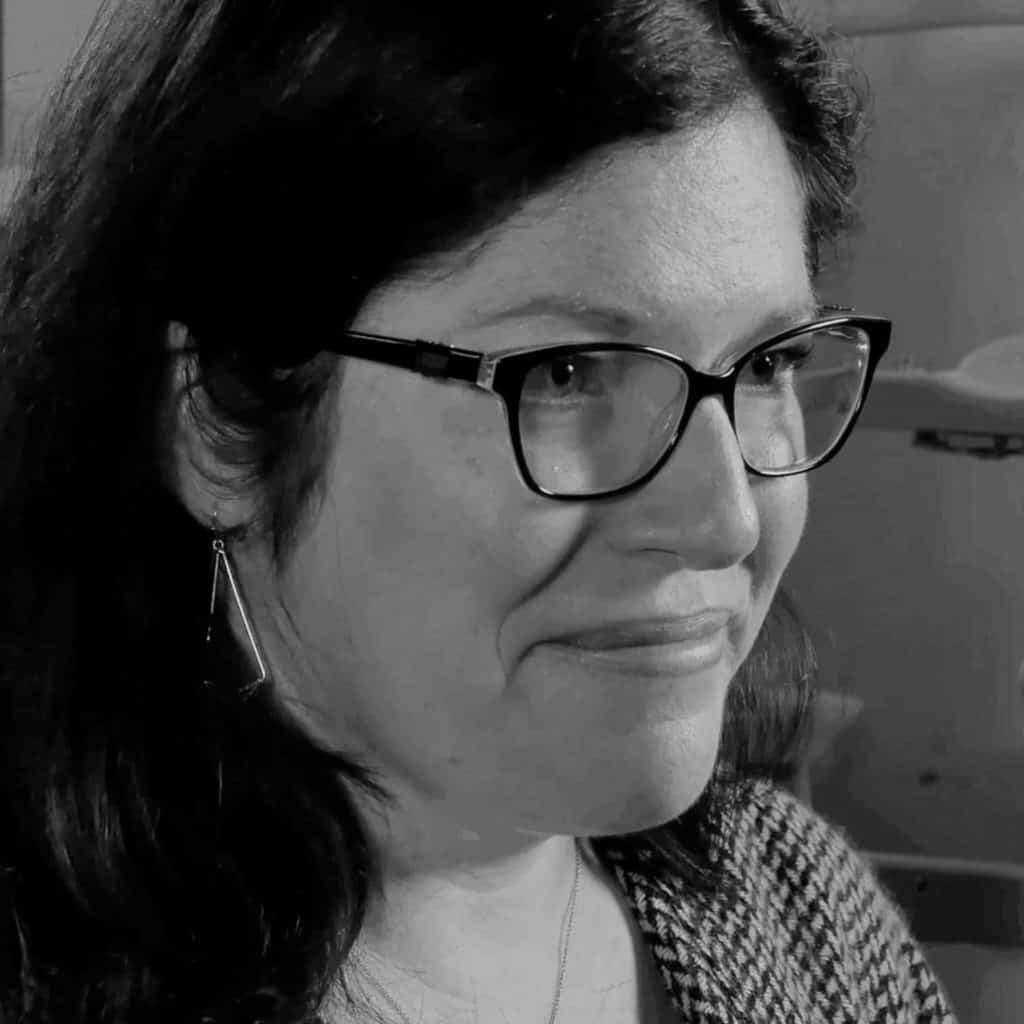As a physician – and patient, she considered her testing at the Mind-Eye Institute to be “weird.” That is until she saw all the science behind it and later experienced relief of neurological symptoms that “top neurologists and ophthalmologists in the country told me I would simply have to accept.”
“As soon as I put on the [Mind-Eye] glasses, my brain started to calm down. I could walk without ataxia and was able to be part of the world in a way I wasn’t before,” says Allyson McKenney MD, of Austin, Texas, who had been suffering the neurological aftereffects of encephalitis, an inflammation of the brain.
Dr. McKenney was referring to the therapeutic, “brain” lenses prescribed by Deborah Zelinsky OD, founder and research director of the Mind-Eye Institute in Northbrook, Ill., following a series of “weird” tests, including the patented Z-Bell Test®, for which Dr. Zelinsky has become globally recognized. The Z-Bell Test® is a simple but revolutionary method of checking a patient’s overall sense of surrounding space and his or her integration of visual processing with awareness of auditory space.
“I am a physician; I wanted to see just how this [Z-Bell] test is supposed to work,” Dr. McKenney says concerning her first visit to the Mind-Eye Institute. “Of course, Dr. Zelinsky immediately pulls up on the computer all the information about the test, including articles from medical journals backing up everything.”
Dr. McKenney sustained what she calls “micro-damage” to brain tissue after contracting meningitis in October 2017 while caring for children and adolescents in Malawi, Africa. The meningitis developed into encephalitis, and she was flown back to the United States where she spent three-and-a-half months in the hospital and in rehabilitation, including intensive care, trying to recover.
“The illness left my senses scrambled and uncoordinated. Loud noises and bright lights caused me to posture (stiffen) and walk off-balance,” Dr. McKenney says.
“I knew my vision was off as well. I was not able to see well at a distance; I had trouble seeing at night. Eye doctors kept telling me I had 20/20 eyesight, but something was off,” she recalls. “In fact, when riding in a car, objects [like signs and other vehicles] seemed to fly at my face. I wanted to duck. Even the movement of the windshield wipers made me nauseated.”
“That’s because her peripheral eyesight was disrupted,” Dr. Zelinsky says. “The standard 20/20 testing of her eyesight was done while she was looking through a hole at a nonmoving target, with her peripheral eyesight blocked.”
Dr. McKenney also found she could read but could not read aloud. Her speech was out of sync with her eyesight.
After going from physician to physician seeking treatment and being told to “just be happy you survived your illness and accept the state of your brain,” Dr. McKenney found a doctor in Houston, Texas, who had read The Ghost in My Brain: How a Concussion Stole My Life and How the New Science of Brain Plasticity Helped Me Get It Back. The book, published in 2015, details academician Clark Elliott’s torturous journey back to health following a severe traumatic brain injury and features the work of Dr. Zelinsky and the optometrists at the Mind-Eye Institute.
“This Houston doctor treats military veterans. He says what I was experiencing is comparable to what soldiers present following blast injuries. He recommended I contact the Mind-Eye Institute,” Dr. McKenney says.
She did just that, and her first set of prescribed, customized eyeglasses were “like night and day. The glasses gave me back a part of my life.”
As her brain and sensory systems became more synchronized, Dr. McKenney graduated to other eyeglass prescriptions. “Dr. Zelinsky knows by my speech – my ability to read aloud — what lenses are the right fit,” Dr. McKenney says.
Unlike standard glasses that correct central eyesight, Dr. McKenney’s eyeglasses are intended to affect peripheral eyesight. In fact, specific quadrants of her current lenses are covered by strips of filtering tape, which redirect environmental visual data, circumventing damaged areas of her brain.
“The right mix of filters, lenses and/or prisms can readjust a patient’s visual balance and eye-ear connection by altering the way light disperses across the retina,” Dr. Zelinsky explains. “Our ‘brain’ glasses selectively stimulate light on the retina to help patients redevelop visual skills during recovery from debilitating, life-altering symptoms of brain injuries.”
Eyeglass prescriptions developed through the Z-Bell Test® are designed for sensory integration, bringing patients like Dr. McKenney relief for a range of symptoms caused by eye-ear imbalances, brain injuries and other neurological issues, adds Daniel Myers, OD, an optometrist on the Mind-Eye Institute team.
“Physicians usually approach patients in boxes,” Dr. McKenney says. “A neurologist looks for diseases in the brain; an ophthalmologist checks the eyes. If they cannot find signs of a problem by scan or physical examination, then the patient must be okay.”
But, “Dr. Zelinsky pushes the limits of science. She takes what she knows about the brain and the eyes, analyzes each patient individually, theorizes which brain pathways are triggering the symptoms, puts all the information together and determines a plan for rehabilitation,” Dr. McKenney states.
Although information continues to progress about how the brain and the sensory systems work together, Dr. McKenney says physicians – and health professionals, in general – must “recognize the importance of the relationship between mind, body and brain. They are not separate entities; they are one.”
Dr Zelinsky concurs. She is leading a campaign to leave 20/20 testing in the 20th Century, with a focus on synchronizing the usage of peripheral processing with central eyesight.
The Society for Brain Mapping and Therapeutics and the Brain Mapping Foundation support Dr. Zelinsky’s discoveries. The society’s slogan is “Breaking Boundaries of Science, Technology, Medicine, Art and Healthcare.”

Success Stories, Traumatic Brain Injury
Physician Suffering Effects of Encephalitis Finds Relief at Mind-Eye Institute
21st Century Testing Proves Just What The Doctor Ordered
